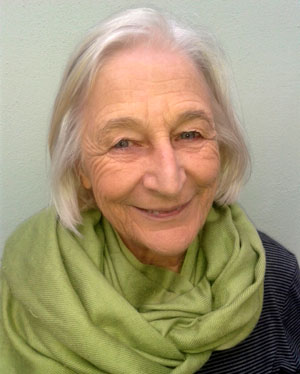In this article I describe a plan for assessing a child's grip and also the finger action for drawing short lines / handwriting strokes.
Remember that in an effective grip the position of the fingers on the pencil shaft:
- stabilises the pencil shaft between the thumb and side of the middle finger;
- allows for small bending and straightening movements of the fore- and middle fingers to move the pencil point on the paper.
Usually the ring and middle fingers are bent and held close to the palm and the side of the little finger rests on the writing surface.
The other important aspect of an effective pencil grip is the position of the wrist. The wrist should be held straight or slightly extended with the end of the pencil shaft pointing backwards past the shoulder.
 A typical dynamic tripod grip is seen as the gold standard, but is not the ideal grip for children with hypermobile hands. A typical dynamic tripod grip is seen as the gold standard, but is not the ideal grip for children with hypermobile hands. |
|
In the picture on the right positioning of the fingers allows for small movements of the fingers. |
Observing a child's pencil grip when drawing long lines
Start by observing the child's grip when drawing long lines and big circles. Instruct the child to draw several large circles on an A4 sheet of paper. This give you an idea of the basic grip configuration and wrist position.
Observe the following:
- The basic configuration of the grip. Is the pencil shaft well stabilised and does the position of the fingers allow for bending and extending the fingers.
- The position of the wrist. Is it held straight and steady? Or does the child tend to bend the wrist.
Finger action when drawing small circles and short lines
 You will need a sheet of paper with a grid of small blocks. Instruct the child to draw a circle in each of the first two rows of blocks. You will need a sheet of paper with a grid of small blocks. Instruct the child to draw a circle in each of the first two rows of blocks. |
 Next demonstrate and instruct the child to draw repeated vertical lines in the next row, followed by a row of diagonal lines. Next demonstrate and instruct the child to draw repeated vertical lines in the next row, followed by a row of diagonal lines. |
Note the followingDoes the child make small movements of the fingers to draw circles and lines?
However she has not yet learned to keep the wrist steady, and as she moves the pencil down she not only bends to fingers but also the wrist. |
|
Her hand would probably be more relaxed it she adopted a thumb adduction grip. |
 Here is another grip that does not allow effective fingr movements. The pencil is stabilised between the pads of the fingers which means that they do not have the freedom to bend and extend. Here is another grip that does not allow effective fingr movements. The pencil is stabilised between the pads of the fingers which means that they do not have the freedom to bend and extend. |
What next? For HWG Subscribers
Changing an ineffective grip: If the child has adopted a grip that does not allow for effective finger movements, the next step is to make some changes to the grip to start to get a more relaxed position with effect stabilisation of the pencil shaft, and then to practice drawing long lines with the new grip until it is well established.
Training finger action: Once a more effective grip pattern has been achieved, move on to practising drawing small circles and short lines to get more effective finger action.
More about pencil grip and finger movementsWhat is an effective pencil grip? Thumb position for an effective grip How to assess your child's pencil grip and finger movements: You are here |
 Children with hypermobile fingers often adopt a grip with the thumb in adduction. Notice that the pencil shaft is stabilised between the thumb and the side of the middle finger.
Children with hypermobile fingers often adopt a grip with the thumb in adduction. Notice that the pencil shaft is stabilised between the thumb and the side of the middle finger.  The pictures below show a child who starts of with a good hand position for drawing vertical lines down, and in fact uses quite good finger movements to do this.
The pictures below show a child who starts of with a good hand position for drawing vertical lines down, and in fact uses quite good finger movements to do this.  This child stabilises the shaft by gripping it tightly with the thumb and fingers. Notice the hyperextension in the end joints of the fore and middle finger. She draws short lines by flexing and extending the wrist.
This child stabilises the shaft by gripping it tightly with the thumb and fingers. Notice the hyperextension in the end joints of the fore and middle finger. She draws short lines by flexing and extending the wrist. 
